Name HMS Aurora Commissioned 12 November 1937 Launched 20 August 1936 Draft 4.3 m | Laid down 27 July 1935 Decommissioned April 1946 Construction started 27 July 1935 Length 154 m Builder HMNB Portsmouth | |
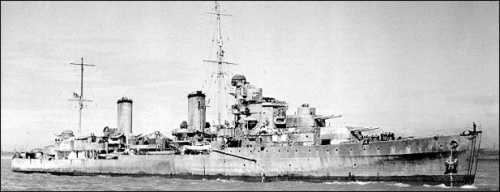 | ||
Fate Sold on 19 May 1948 to the Nationalist Chinese Navy | ||
HMS Aurora was an Arethusa-class light cruiser of the Royal Navy. She was built by Portsmouth Dockyard, with the keel being laid down on the 27 July 1935. She was launched on 20 August 1936, and commissioned 12 November 1937.
Contents
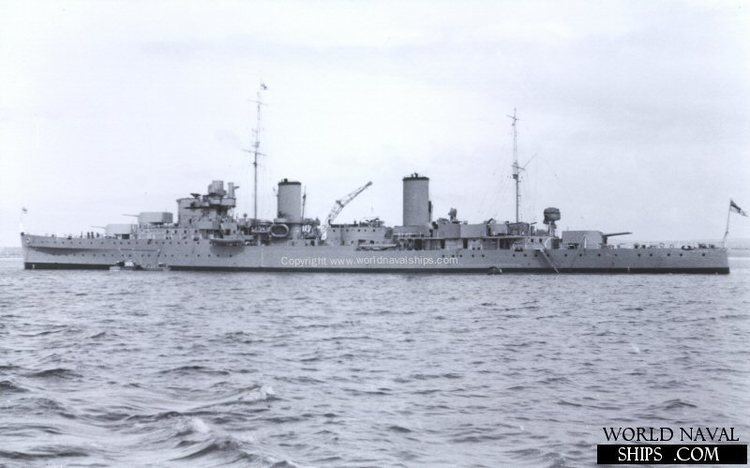
History
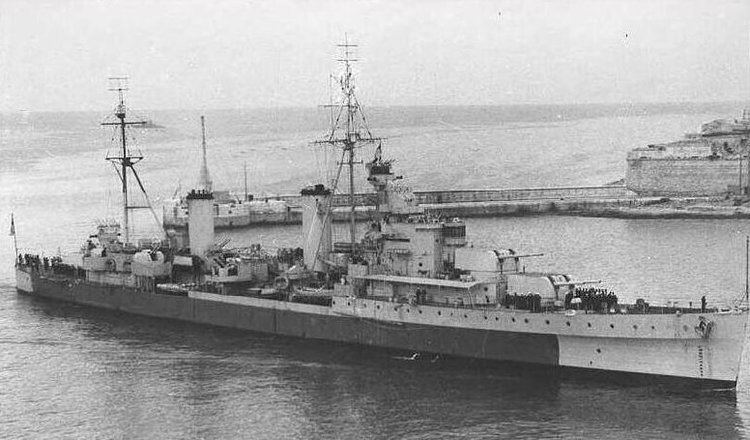
Aurora served with the Home Fleet from completion as Rear Admiral (D). In September 1939 she was with the 2nd Cruiser Squadron, escorting convoys to Scandinavia and engaged in the hunt for the German battleships Scharnhorst and Gneisenau. From October 1940 she was commanded by Captain William Gladstone Agnew. After the Norwegian Campaign she participated in the operations hunting the German battleship Bismarck and, with the cruiser Kenya, intercepted one of the German supply ships, Belchen, on 3 June 1941.

Between July and August 1941, as part of Force "K" with the Home Fleet, she was involved in operations to Spitzbergen and Bear Island (Operation Gauntlet). After one of these sorties, in company with the cruiser Nigeria, she intercepted a German troop convoy off Northern Norway, and the German Bremse was sunk. In the autumn she was transferred to the Mediterranean and arrived in Malta on 21 October 1941 to join a new Force "K".
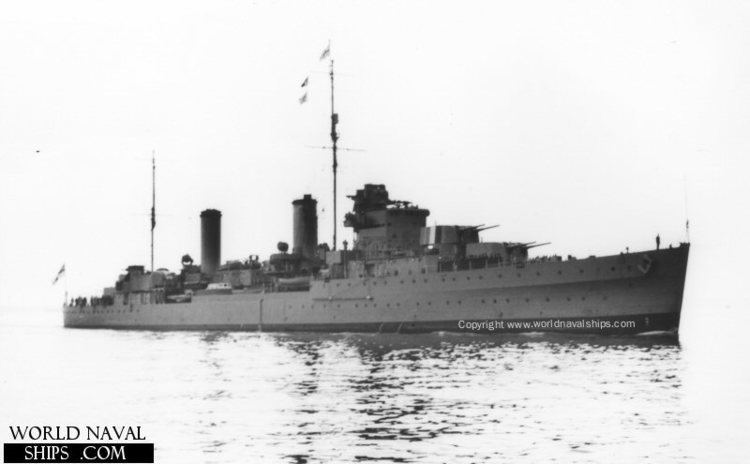
On 9 November 1941 leading Force "K" consisting of HMS Penelope, HMS Lance and HMS Lively, she was involved in the destruction of the Beta Convoy. In the resulting battle the Italian destroyer Fulmine is sunk as well as the German transports Duisburg (7389 GRT) and San Marco (3113 GRT), the Italian transports Maria (6339 GRT), Sagitta (5153 GRT) and Rina Corrado (5180 GRT), and the Italian Conte di Misurata (5014 GRT) and Minatitlan (7599 GRT). The Italian destroyers Grecale and Euro are damaged.

On 24 November Force "K", made up of the British light cruisers HMS Aurora (Capt. W.G. Agnew, RN) and HMS Penelopee (Capt. A.D. Nicholl, RN) and the British destroyers HMS Lance (Lt.Cdr. R.W.F. Northcott, RN) and HMS Lively (Lt.Cdr. W.F.E. Hussey, DSC, RN), intercept an Axis convoy about 100 nautical miles west of Crete. The Axis convoy is bound from the Aegean to Bengasi. The two German transports in the convoy Maritza (2910 GRT) and Procida (1842 GRT) are both sunk by HMS Penelope and HMS Lively despite the presence of the Italian torpedo boats Lupo and Cassiopea.
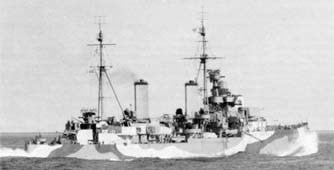
On December 1 1941 Force "K" with HMS Penelope and HMS Lively attacked the Mantovani Convoy. Italian destroyer Da Mosto and the sole cargo ship Mantovani were sunk.
HMS Aurora also participated in the first battle of Sirte on December 17, 1941. On 19th December while steaming off Tripoli she was heavily damaged in a mine field and was forced to retire to Malta.
After her return to the Mediterranean she joined Force "H", and in November was part of the Centre Task Force for the Landings in North Africa, Operation Torch. Off Oran, she engaged the Vichy French destroyers Tramontane and Tornade on 8 November 1942, sinking the latter and damaging the former so badly that she had to be beached. The following day she badly damaged the destroyer Épervier and drove her ashore. By December she was operating as part of Force "Q" at Bône against the Axis evacuation and supply convoys between Trapani and Tunis.
Then, as a unit of the 15th Cruiser Squadron, she participated in the invasion of Sicily and the Salerno landings (Operation Avalanche) before moving into the Aegean in October 1943. During operations in that area she was damaged by bombs off Castellorizo on 30 October, and withdrew to Taranto for repairs which lasted until April 1944. In August 1944 she was at the landings in the south of France, then returned to the Aegean, where she assisted in the liberation of Athens.
After the war Aurora was sold on 19 May 1948 to the Chinese Navy as compensation for six Chinese Custom patrol ships and one freighter that the British seized in Hong Kong and lost during the war. She was renamed Chung King, after the Chinese war time capital of Chung King (Chongqing), and became the flagship of the Chinese navy. On 25 February 1949 her crew defected to the Communists with the ship. Her name in Chinese remained unchanged but the Communists romanized the name differently, as "Tchoung King". In March 1949 she was sunk in Taku harbour by Nationalist aircraft. She was later salvaged with Russian assistance but then stripped bare as "repayment". The empty hulk spent the rest of her life as an accommodation and warehouse ship, being subsequently renamed Yellow River (Huang He) in 1959, when it was transferred to Shanghai on October 27 of that year to be converted to a salvage ship at a planned budget of 3 million ¥. After spending 276,000 ¥, the conversion project was cancelled, and the ship was once again transferred, this time to Tianjin in June 1965, used as a barrack ship and renamed Beijing. She served until 1990s before finally being retired and scrapped. Her name tablet and ship bell were preserved in the Military Museum of the Chinese People's Revolution.
